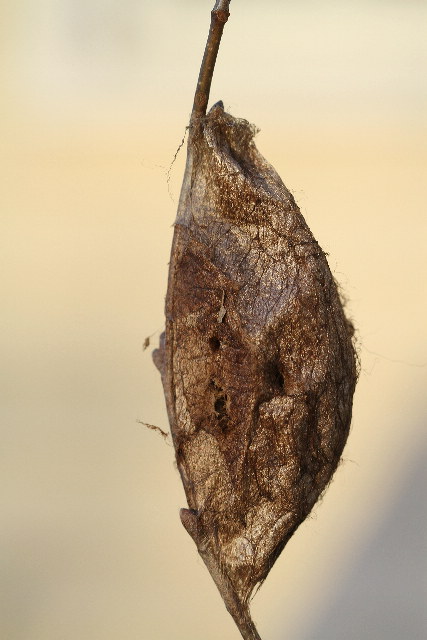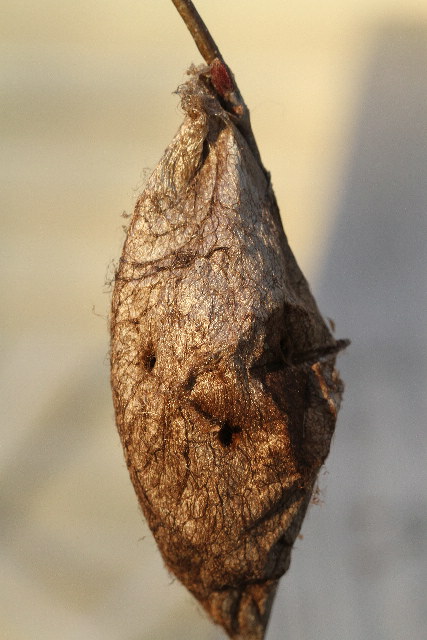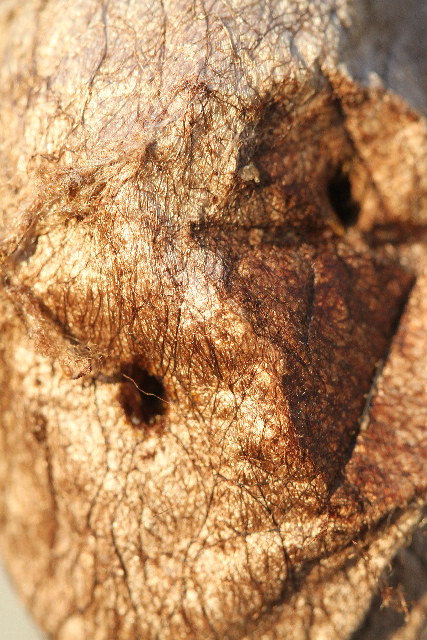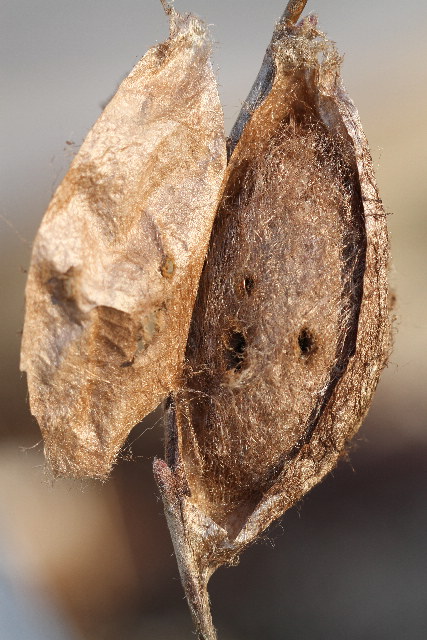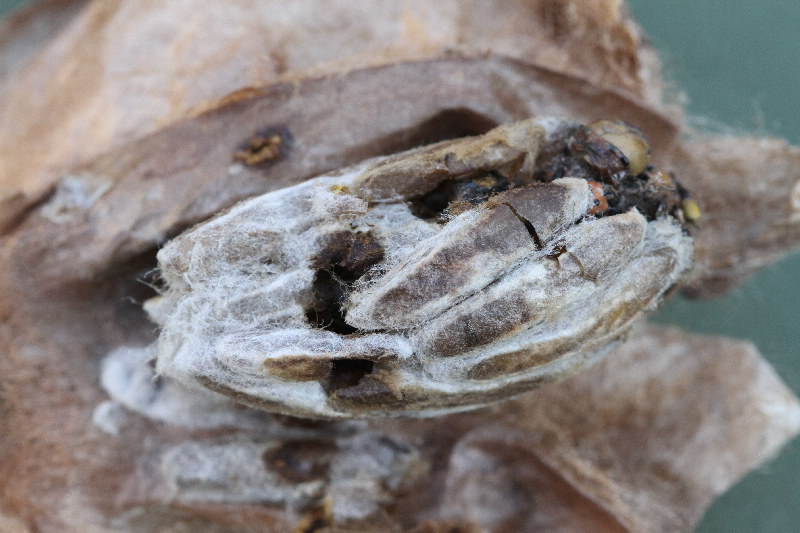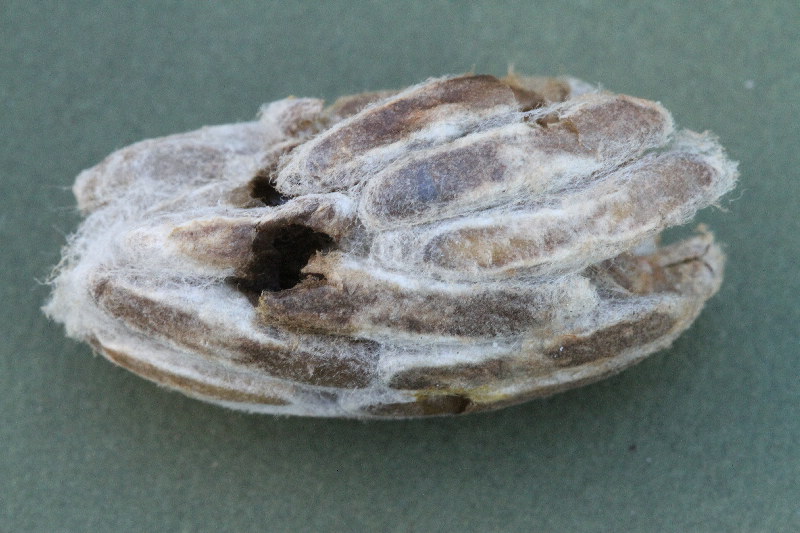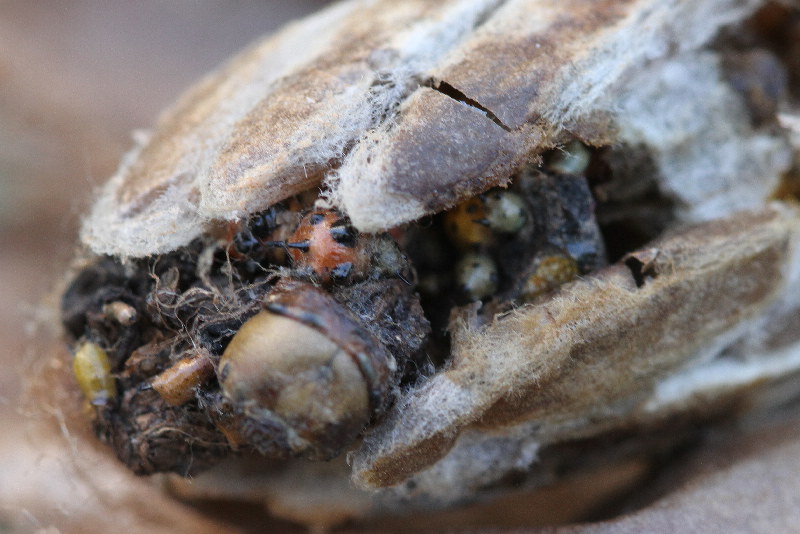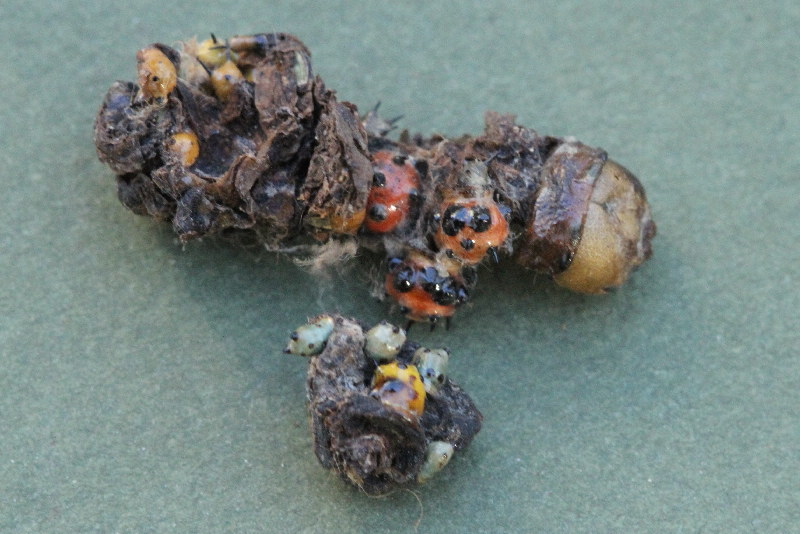Cecropia (Hyalophora cecropia) - Parasitized Cocoon Collected from the Air Line Trail in Hebron, Connecticut, January 4th, 2012 - Stan Malcolm Photos |
Cecropia Home Page Along the Air Line... |
I found a cocoon with what looked like bird pecks. It was very light, did not rattle when shaken (as would a cocoon with an intact pupa), and had no signs of a moth having emerged from the top. |
|
I decided to see what was inside. |
The bird pecks extended through both outer and inner cocoon layers. |
Inside, the coccon was packed full of wasp cocoons, some of which had been pierced by the bird pecks. |
Others were intact and I will try to rear the adult wasps for identification. As I opened the moth cocoon, I inadvertently slit a wasp cocoon. Inside was a wasp larva (killed by my scissors, unfortunately). Presumably the wasps don't pupate until spring, then emerge in early summer to seek out caterpillar hosts for their eggs. Many thanks to George "Jeff" Boettner of UMass Amherst for identification of the wasps as Gambrus sp. (Family Ichneumonidae). Jeff writes, "They lay an egg in the host and the eggs double to fill up the host, so generally you get 32 in the smaller silk moths or 64 in the big Cecropia females, but not all make it. Hypers ("hyperparasites", or parasites of the parasites) are pretty common in these guys too. Worth rearing out to see what you get. |
There was very little left of the Cecropia Moth caterpillar, hardly more than you would expect in a cast skin. |
|
